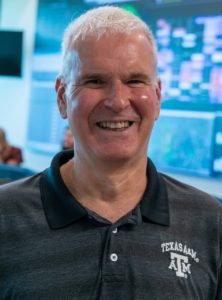Course Director: Dr. Tom Overbye
Next Offering: October 7-9, 2025
Description
High voltage electric grids are some of the world’s most complex machines, whose present high levels of reliability have been achieved through careful planning. The purpose of this three day short course is to provide a comprehensive coverage of the processes used in doing this planning. The course philosophy is to provide a practical, hands-on approach to describing electric transmission grid planning, with abundant practical examples illustrating each stage in the process. Particular attention will be given to those studies driven by regulatory processes relevant to utilities in North America such as by the U.S. Federal Energy Regulatory Commission (FERC) or the North American Electric Reliability Corporation (NERC). Throughout the course concepts will be illustrated using common industrial planning tools including PowerWorld Simulator with some hands-on exercises. Collectively the three course instructors have decades of experience in doing electric power system planning, planning software tool development, and engineering education (Hours: CEU 2.1, PDH 21).
Who Should Attend
The course is designed to provide a comprehensive coverage of the fundamentals of the planning of high voltage electric power systems. It is ideally suited for electrical engineers who have minimal experience in power system planning, including new graduates and engineers from other areas of the utility industry. The course will also be useful for managers who would like to gain and understanding of the planning process, for those working in the policy and regulatory areas, for academics wishing to gain a practical understanding of the planning process, and for graduate students interested in careers in the power industry.
This course counts toward the Texas A&M Certificate in Electrical Power Engineering.
Register Here!
Topics
- Overview of the electric grid and the history of planning
- The art of planning
- The power system modeling process
- Power flow applied to large systems
- Application of static analysis tools for planning
- Security constrained optimal power flow and locational marginal prices (LMPs)
- Power system visualization for planning
- Operations: what a planner needs to know
- Advanced power grid transmission technologies and their role in planning
- Large-scale regional transmission grid planning
- Generator interconnection studies
- Techniques for automating the planning process
- Power system dynamics and stability
- Planning for a high percentage of renewables
- Dealing with bad data
- The role of regional planning committees
- Planning for electric grid resilience
- Communicating results
Logistics
Dates and Times: October 7-9, 2025; 8:00 a.m. – 5:00 p.m.
Location: Texas A&M Center for Infrastructure Renewal (CIR), 1041 RELLIS Parkway, Bryan TX
Air Transportation:
Direct flights available at the Texas A&M Easterwood Airport (CLL) from Dallas-Fort Worth (DFW) on American and Houston (IAH) on United.
Other airports within driving distance: Austin (AUS) and Houston (IAH), both about two hours away
May rent car or use shuttle service: Airport Ground Shuttle
Registration Cost: $1,795. Discount of 25% is available for employees of Smart Grid Center member companies. For more information on the discount, contact SGC@tamu.edu.
Hotel Block: TBA
Register Here!
Instructors

Tom Overbye, Ph.D. is a Professor and holder of the O’Donnell Foundation Chair III in the Department of Electrical and Computer Engineering at Texas A&M University (TAMU), and Director of TEES Smart Grid Center. He received his BS, MS, and Ph.D. degrees in Electrical Engineering from the University of Wisconsin-Madison. Before starting his academic career he was employed with Madison Gas and Electric Company, working in their planning and operations departments. He is the original developer of PowerWorld Simulator (a widely used power system planning tool), a co-founder of PowerWorld Corporation, and an author of a widely used Power System Analysis and Design book. He is a recipient of the IEEE Power and Energy Society Outstanding Power Engineering Educator Award, an EEE Fellow, a member of the US National Academy of Engineering, and was responsible for the initial development of dynamics analysis in PowerWorld Simulator.

Tracy Rolstad is an engineer with Trina Solar. He received his BSEE from the University of Idaho and a graduate diploma from the Naval War College (College of Naval Command and Staff). He started his career in power systems as a Reactor Operator and Engineering Watch Supervisor in the United States Navy (onboard USS Hawkbill) serving 22 years in the Navy and Navy Reserve. His experience in power system planning and modeling began at the Joint Warfare Analysis Center and then developed and evolved at the Bonneville Power Administration (technical operations), as a Principal Engineer at Utility System Efficiencies and later at several other companies. Tracy has served as the Western Electricity Coordinating Council (WECC) Technical Studies Subcommittee Chair, Vice-Chair, and Secretary. Additionally, he served as the WECC RAS and Relay Workgroup Chair addressing modeling issues related to 2011 AZ to CA outage. He is a member of the IEEE and the VFW.

Jonathan Snodgrass, Ph.D., is a Senior Research Engineer working under Professor Tom Overbye in the area of large-scale electric power systems, and Assistant Director for Modeling, Simulation and Outreach at Smart Grid Center of Texas Engineering Experiment Station. He received his BS and MS degrees at Texas A&M University, and MS and PhD degrees at the University of Wisconsin-Madison, all in electrical engineering. His primary research area is in power system network planning and resilience, with current projects focusing on light, medium and heavy-duty EV integration using combined transmission and distribution co-simulation. His other research areas include modeling impact of high-impact, low-frequency events (such as GMD and EMP) on the electric grids, power system optimization, and microgrids. He also worked for two years at Zachry Engineering Corporation in Amarillo, TX designing simple and combined cycle natural gas generating plants.
For More Information
- For more information about this course, as well as other upcoming Texas A&M electric power short courses, contact Dr. Tom Overbye at overbye@tamu.edu or visit his research website at overbye.engr.tamu.edu.
